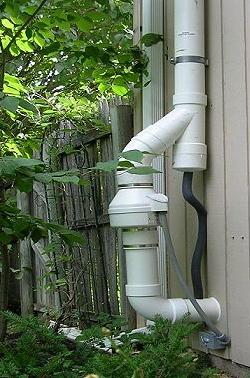Radon is an odorless, colorless, extremely toxic gaseous radioactive element that originates from the natural (radioactive) breakdown of uranium in soil, rock and water. The amount of radon in the soil depends on soil chemistry, which varies from location to location. Radon levels in the soil range from a few hundred to several thousand pico Curies per Liter of air (pCi/L). The amount of radon that escapes from the soil to enter a building depends on weather, soil porosity, soil moisture and the suction within the building.
According to the U.S. Environmental Protection Agency (EPA), the average indoor radon level is estimated to be about 1.3 pCi/L, and about 0.4 pCi/L is normally found in the outside air. Currently, the U.S. EPA has established an Action Level of 4.0 pCi/L. If the indoor concentration of radon gas exceeds the Action Level, than remedial action is recommended to reduce the radon concentration below the Action Level.
The quickest way to test a building for radon is with short-term devices. Short-term tests remain in the building for 2 days to 90 days, depending on the device. Because radon levels tend to vary from day to day and season to season, a short-term test is less likely than a long-term test to determine the year-round average radon level. If quick results are required, however, a short-term test followed by a second short-term test may be appropriate. Long-term tests remain in the building for more than 90 days, and will provide a reading that is more likely to determine the home’s year-round average radon level than a short-term test.
Clay Point Associates personnel can assist building owners with testing for the presence of radon gas, and can design a remediation system to lower radon concentrations below the EPA Action Level should this be necessary.
Radon Links:


